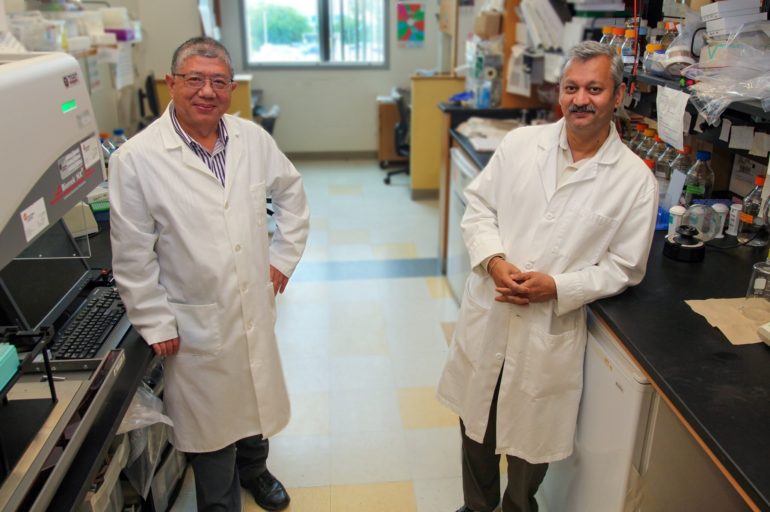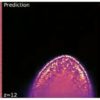How well women with cervical cancer respond to treatment and survive correlates with the level of 10 proteins in their blood that also are associated with a “zombie” cell state called senescence, Medical College of Georgia scientists report.
They looked at pretreatment levels of these proteins in the blood of 565 Peruvian women with stage 2 and 3 cervical cancer, who received standard treatments of internal radiation, called brachytherapy, external radiation or both. They found that women with low levels of the proteins secreted by senescent cells had higher survival rates than those with high levels of these senescence-associated secreted phenotypes, or SASPs.
Additionally they found that brachytherapy, which implants a radiation source close to the cervix, greatly improved survival of patients who had high levels of these SASPs but had little impact on those with low levels.
“These results demonstrate that cellular senescence is a major determining factor for survival and therapeutic response in cervical cancer, and suggest that senescence reduction therapy may be an efficacious strategy to improve the therapeutic outcome of cervical cancer,” they write in the journal Cancers.
“We want to figure out how we can treat cervical cancer better than we do. Beyond stage and treatment modality, what other factors are playing a big role in determining which patients survive and how they respond to radiation therapy,” says Dr. Jin-Xiong She, director of the MCG Center for Biotechnology and Genomic Medicine, Georgia Research Alliance Eminent Scholar in Genomic Medicine and the study’s corresponding author.
“The most important conclusion of our paper is you want to manage senescence to improve therapy for cervical cancer,” She says.
In women with moderate to high blood levels of SASPs, use of a class of drugs called senolytics—which target these cells for elimination and are under study to improve age-related problems and disease—as an adjunct therapy could help, says Dr. Sharad Purohit, biochemist in the MCG Center for Biotechnology and Genomic Medicine and the study’s first author.
Cervical cancer is the most common gynecological cancer, caused almost exclusively by the human papillomavirus. While it is largely preventable by regular Pap smears that can detect early, precancerous changes, or by vaccines against HPV, survival rates for those who get it have been stagnant for decades, the scientists say. In fact, survival rates of the most common cancers have improved since the mid-1970s, except for cervical and endometrial cancer, according to the American Cancer Society.
Purohit, She and their colleagues would like to change that, and have some of the first evidence that targeting senescence is one way to do it.
They looked at blood levels of a total of 19 proteins they had found secreted by cells in a pathological site like a precancerous or cancerous cervix, although why the proteins are made is a question they can’t yet answer, says Purohit. This type of “liquid biopsy” can enable regular monitoring without actually doing a tissue biopsy each time, She says of the approach gaining ground in the cancer field.
They found that levels of 10 of the proteins had an impact on cervical cancer survival in the women who were an average of 49-years-old. All 10 were associated with cellular senescence, either as the largely destructive and inflammatory SASPs themselves or involved in regulating SASPs.
While cancer cells more typically are associated with rapid reproduction that enables cancer’s growth, senescent cells cannot divide and reproduce. But She categorizes the proteins these senescent cancer cells are secreting as “bad stuff,” which helps create an inflammatory state in which cancer thrives and helps lay the groundwork for cancer spread. It also provides some protection from radiation therapy, which like chemotherapy, works in part by killing off typically rapidly dividing cancer cells.
“The senescent proteins really change how cancer cells may respond to therapy,” She says.
They used machine learning, a form of artificial intelligence that enables computers to figure out what the data means, to make the association between high SASP level and low survival and vice versa.
In the patients included in the study, everyone with stage 2 and most with stage 3 cancer received both internal and external radiation; 86 patients with stage 3 only received external beam radiation.
Whether patients with low SASP levels could benefit from brachytherapy should be further explored, but they found no clear benefit to them, She and his colleagues write.
Antibodies against sugars, internal radiation: Powerful package against cervical cancer
More information:
Sharad Purohit et al. Senescence-Associated Secretory Phenotype Determines Survival and Therapeutic Response in Cervical Cancer, Cancers (2020). DOI: 10.3390/cancers12102899
Provided by
Medical College of Georgia at Augusta University
Citation:
Cervical cancer survival may improve by targeting senescent ‘zombie’ cells (2020, December 7)
retrieved 7 December 2020
from https://medicalxpress.com/news/2020-12-cervical-cancer-survival-senescent-zombie.html
This document is subject to copyright. Apart from any fair dealing for the purpose of private study or research, no
part may be reproduced without the written permission. The content is provided for information purposes only.



